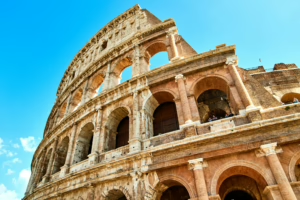DJI Avata vs Avata 2: A Deep Dive into the FPV Powerhouses
The world of FPV drones continues to evolve, and DJI’s Avata series stands as a testament to that. While the Avata 1 paved the way for user-friendly cinematic flying, the Avata 2 promises to elevate the experience further. But with both drones boasting impressive features, which one deserves a spot in your hangar? Let’s dissect their strengths and weaknesses to help you make an informed decision.
Camera and Image Quality: A Quantum Leap
- Avata 1: Here, the 1/2.8-inch CMOS sensor delivers decent 4K/50fps footage. However, pushing it to capture low-light scenes or scenes with high dynamic range exposes limitations. In low-light conditions, footage can become grainy and lack detail, while highlights and shadows can appear blown out or crushed in high-contrast environments.
- Avata 2: This is where the Avata 2 truly shines. The massive upgrade to a 1/1.3-inch sensor brings a night and day difference. Anticipate noticeably sharper 4K/60fps videos with HDR (High Dynamic Range). This translates to capturing scenes with intricate details in both brightly lit areas and deep shadows. Additionally, the 10-bit D-Log M color profile provides greater flexibility for post-production color grading, allowing you to achieve stunning cinematic results.
Pro: Avata 2 — Dominates in capturing high-quality footage, especially in low-light and complex lighting scenarios. The HDR and wider color profile open doors for creative expression in post-producing your videos.
Con: Avata 1 — Struggles in low-light and high-contrast situations. The limited dynamic range restricts the creative possibilities during editing.
Flight Performance and Control: Stability vs. Agility
- Avata 1: Prioritizes user-friendliness with intuitive controls and excellent flight stability. This makes it a perfect choice for beginners who are still getting their bearings in the world of FPV flight. The cinewhoop design with its ducted propellers offers extra protection in case of crashes, giving you more confidence while learning the ropes.
- Avata 2: Maintains the beginner-friendly controls and cinewhoop design, ensuring a smooth learning curve for newcomers. However, for experienced pilots seeking to push their boundaries, the Avata 2 introduces the exciting “Easy ACRO” mode. This innovative feature simplifies acrobatic maneuvers like flips and rolls, allowing you to capture dynamic and creative FPV footage without requiring extensive manual control mastery.
Pro: Avata 1 (for beginners) — Provides a safe and stable platform for learning to fly FPV drones. The forgiving nature of the controls minimizes the risk of crashes during your initial flights.
Pro: Avata 2 (for experienced pilots) — Unlocks creative potential with the “Easy ACRO” mode, making it easier to capture stunning FPV action sequences.
Con: Avata 1 (for experienced pilots) — Lacks the features and agility to perform advanced maneuvers, potentially hindering creative expression for skilled pilots.
Transmission and Goggles: Seeing is Believing
- Avata 1: Relies on DJI’s older OcuSync 2.0 transmission system. While it offers decent range and connection stability in most scenarios, some users may experience occasional signal drops, especially when flying in environments with a lot of interference. The Avata 1 is compatible with the DJI FPV Goggles V2, which provides a good quality FPV viewing experience.
- Avata 2: Upgrades to the next-generation OcuSync 4 transmission system. This translates to a more robust connection with a significantly improved range and reduced chance of interference. With OcuSync 4, you can fly more confidently, knowing you’ll maintain a reliable connection with your drone. The Avata 2 pairs with the new DJI Goggles 3, boasting a higher resolution display for an even more immersive FPV experience. The sharper visuals allow you to see every detail of the environment you’re flying in, making for a more precise and enjoyable flight.
Pro: Avata 2 — Offers a superior connection with OcuSync 4 and a more immersive viewing experience with the higher resolution DJI Goggles
Con: Avata 1 — May experience occasional signal drops with OcuSync 2.0, potentially disrupting your flight and compromising safety. While good, the DJI FPV Goggles V2 offers a lower resolution than the Avata 2’s goggles.
Price: Value for Money
- Avata 1: Generally available at a more budget-friendly price point. This makes it an attractive option for cost-conscious beginners who want to enter the world of FPV drones without breaking the bank.
- Avata 2: Naturally commands a higher price tag due to its advanced features and cutting-edge technology. The upgraded camera sensor, OcuSync 4 transmission system, and DJI Goggles 3 all contribute to the increased cost.
Pro: Avata 1 — More affordable option for beginners with FPV flying.
Con: Avata 1 — Lower price reflects its limitations in camera quality, transmission range, and viewing experience.
Most popular:
Most Recent:
The Ultimate Choice: It Depends on Your Needs
Deciding between the Avata 1 and Avata 2 boils down to your individual needs and budget.
For Beginners:
- Go for the Avata 1 if: You’re on a tight budget and prioritize a user-friendly platform to learn the ropes of FPV flight. The Avata 1’s stability, forgiving controls, and cinewhoop design will ease you into the world of FPV without overwhelming you with complex features.
For Experienced Pilots:
- Choose the Avata 2 if: You crave exceptional image quality for capturing stunning visuals in various lighting conditions. Additionally, if you’re looking to expand your creative horizons with acrobatic maneuvers and appreciate a more robust connection and immersive viewing experience, the Avata 2 is the clear winner. However, be prepared to pay a premium for these advanced features.
Both the Avata 1 and Avata 2 represent significant advancements in FPV technology.
The Avata 1 remains a solid choice for budget-conscious beginners, while the Avata 2 pushes the boundaries with its superior camera, advanced features, and enhanced flight experience.
Ultimately, the best choice depends on your skill level, creative vision, and budget.
So, take your pick, strap on your goggles, and prepare to take flight into the exhilarating world of FPV!








